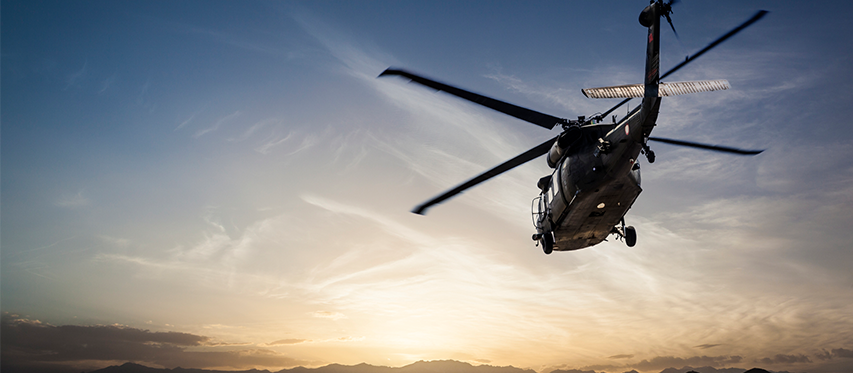
As 2020 draws to a close, we sat down to chat with Rick Lober, vice president and general manager for the defense and intelligence systems division (DISD) at Hughes, to capture insights and key lessons from the year.
What was Hughes looking at as 2020 began?
In early 2020, we were actively hiring both program and engineering staff to support new development programs. For instance, we were staffing up to support a major Data Link Modernization (DLM) contract from General Atomics Aeronautical Systems, Inc. (GA-ASI) to provide new advanced SATCOM systems for the U.S. Army’s MQ-1C Gray Eagle Unmanned Aircraft System (UAS). We were also gearing up in early 2020 to do a live, in-flight test of our HeloSat capability on a Blackhawk Helicopter. We had a lot of projects in the early planning stages and many, such as the USAF Protected Tactical Enterprise System (PTES) program, that were well underway for our DoD customers.
How did Hughes meet the challenge of COVID for its customers?
While some businesses shut down or dialed back their operations due to COVID, the U.S. military had to keep going with business as usual. And so did we.
Luckily, Hughes is considered an “essential business,” so our offices and factory were able to remain open and operational. That said, many of our staff were able to telework (and are still teleworking as of December). Keeping those employees who don’t need to be in the office out of the office has helped us keep all our team members safe and ensure that we can deliver on our commitments to our customers. We have implemented new policies and safe practices for our team members who must come in to work in our on-site classified spaces and development labs. And of course, we cannot do in-person customer visits, so everything’s been virtual. But the DoD is extraordinary at handling a high degree of change, and I have to say that the Hughes team is nimble and adept while staying focused on supporting our customers.
What are you hearing from customers about multi-transport solutions?
With new MEO and LEO systems coming online, our customers are very interested in how we can apply our extensive experience in the management of multi-transport networks to these new multi-constellation opportunities to help deliver more resiliency and more bandwidth.
Polar coverage is also drawing a lot of interest from our customers. Satellites aren’t typically on orbits over the poles, but there’s a growing need to monitor ice flows breaking up, commercial fishing activities, and even potential national security incursions. OneWeb, in which Hughes has agreed to invest, will have polar coverage. We are exploring how its capabilities and systems can be applied to benefit the DoD given the complementary nature of GEO satellites, with their capacity density, and LEO constellations, with global coverage, including of the poles.
What lesson will you take from 2020 as you prepare for 2021 and beyond?
COVID has underscored the military’s need for resilient, wideband, multi-transport communications networks. The military must have multiple, resilient communications paths, instantly, to support mission-critical activity. With increasingly complex networks starting to use a mix of commercial LEO, GEO, MEO and DoD satellites, the day of humans making decisions about the most reliable method of transport, especially in contested and congested military environments, is nearly over. There isn’t time for a human to manage it all and be able to keep up with the pace of conflict. This is where the advent of advanced network management and artificial intelligence and machine learning techniques will pave the way for the future of interoperable, hybrid networks that enable our warfighters to adapt to any situation in near-real-time – whether a natural disaster or military conflict or even a global pandemic.